 |
|||||||||||||||
William John "Pete" Knight, 18 November 1929 to 7 May 2004 (74 years) X-15 Missions: 16 flights from 30 September 1965 to 13 September 1968 Highest Speed: Mach 6.70 (4,520 mph)xxxxxxxxxxHighest Altitude: 280,500 feet (53.1 miles) |
||
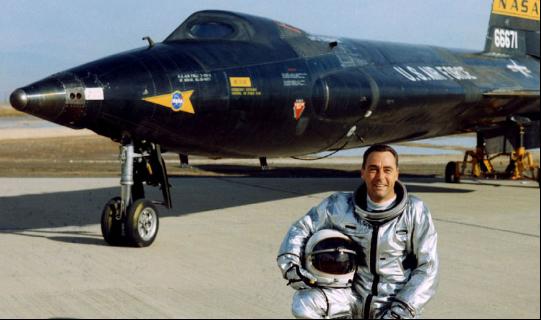 |
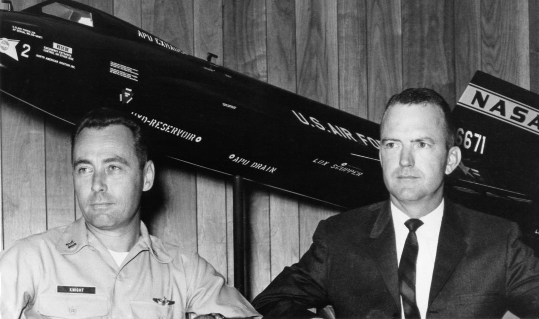 |
|||
William J. "Pete" Knight, US Air Force. X-15 Pilot no. 10. Armstrong Flight Research Center |
Pete Knight and Bill Dana the day they were announced as X-15 pilots on 26 Jul. 1965. NASA Headquarters |
|||
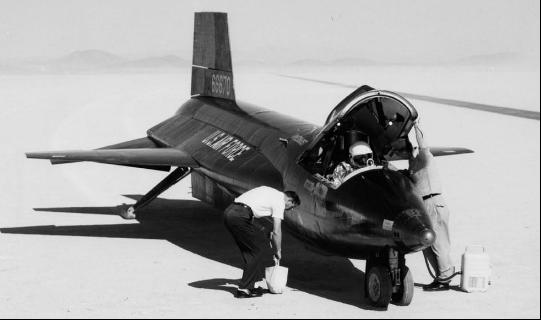 |
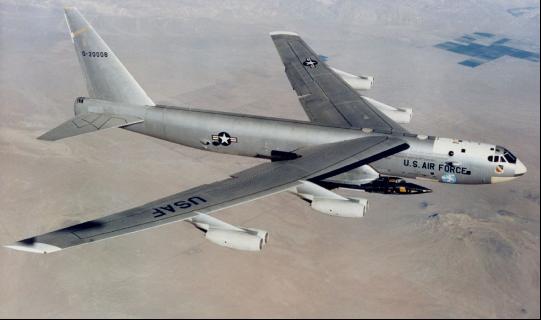 |
|||
Moments after touchdown the ground crew arrives to aid pilot egress. author's collection |
Knight ready for launch on his second flight with mission 3-50-74 on 12 Oct. 1965. Edwards History Office |
|||
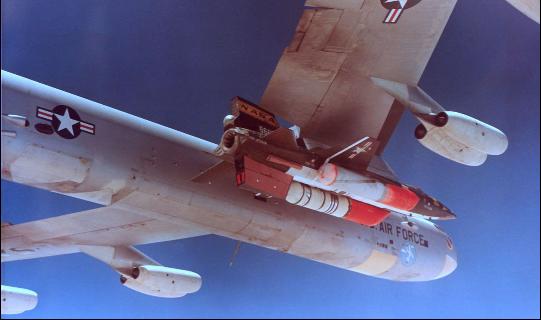 |
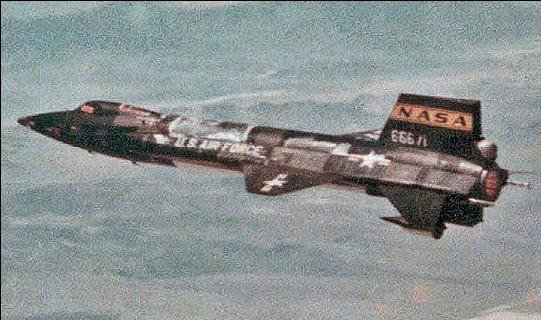 |
|||
Second full external tank flight with mission 2-50-89 on 18 Nov. 1966. Armstrong Flight Research Center |
Final X-15A-2 flight before ablative applied with mission 2-51-92 on 8 May 1967. Armstrong Flight Research Center |
|||
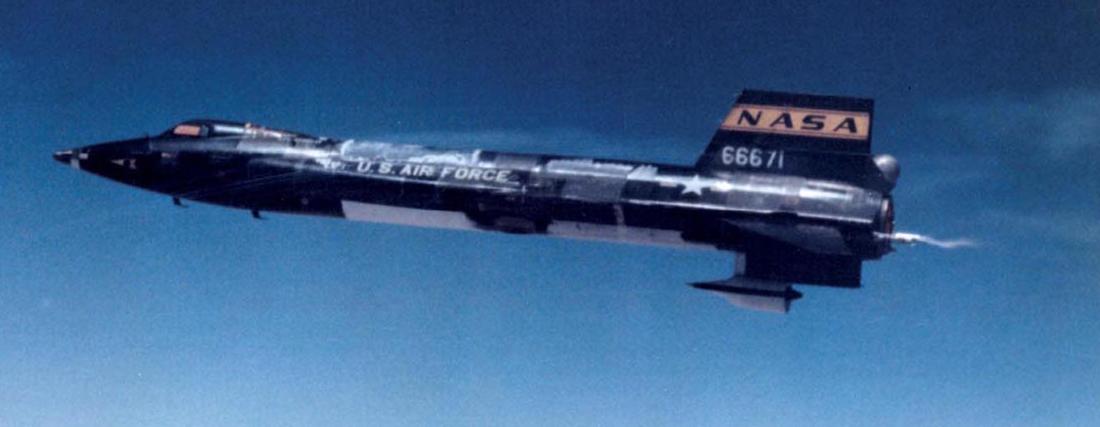 |
||
The dummy scramjet is mounted to the bottom of the lower ventral fin for flight test on 8 May. Pete will take X-15 no. 2 to Mach 4.75 (3,193 mph) at 97,600 feet. Armstrong Flight Research Center |
||
— Preparing the X-15A-2 for an assault on Mach 8 — |
||
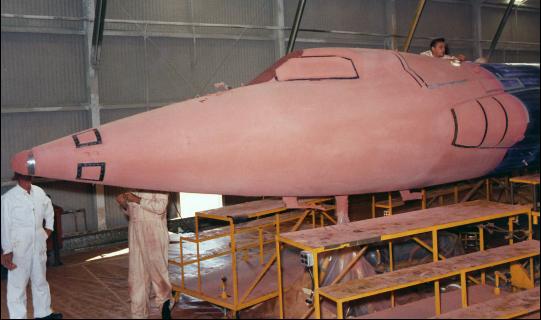 |
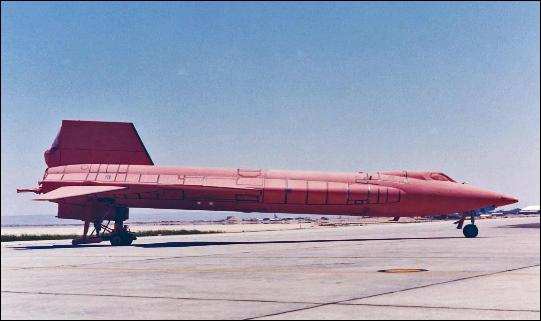 |
|||
Ablative coating in place on cockpit and forward fuselage in early June 1967. Armstrong Flight Research Center |
Rollout of the pink, ablative-coated X-15A-2 on 21 Jun. 1967. Armstrong Flight Research Center |
|||
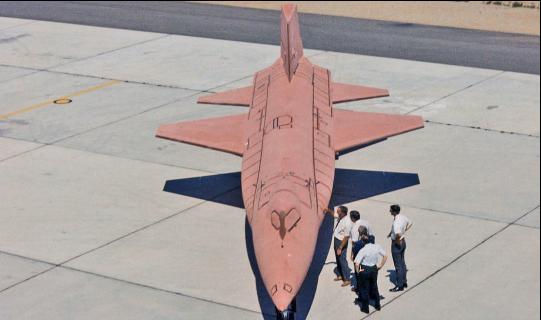 |
||||
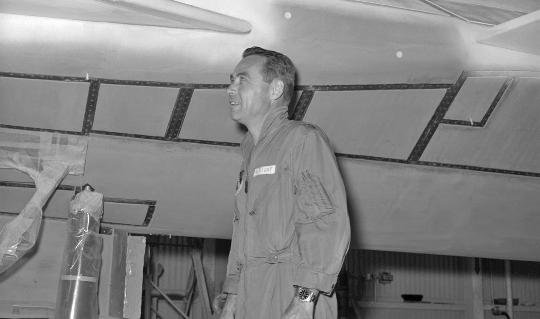 |
||||
Checking out the pink X-15A-2 after the Martin MA-25S ablative was applied. Armstrong Flight Research Center |
||||
Knight checks out progress in applying the white protective coating on 22 Jun. 1967. Armstrong Flight Research Center |
||||
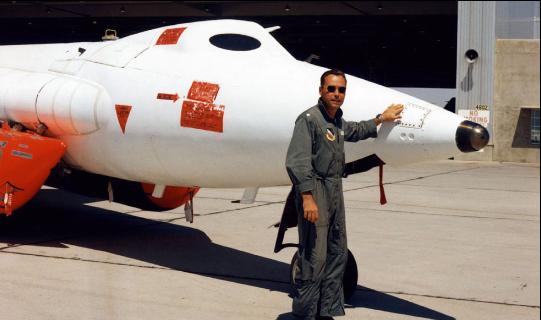 |
|||||
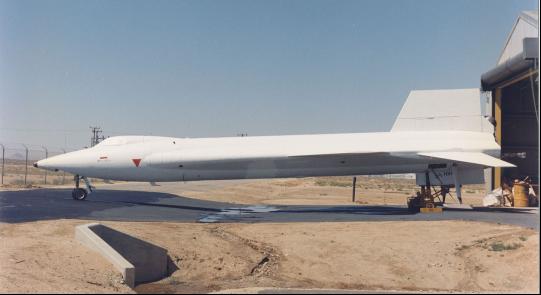 |
|||||
A ghostly X-15 emerges from the paint shop, ready to tackle even higher speeds. Unfortunately, the ablator would not live up to the expectations of achieving Mach 8, although it did extend the speed range of the X-15 by approximately 500 mph. Armstrong Flight Research Center |
|||||
The completed "White Knight" aircraft with its namesake on 4 Aug. 1967. Armstrong Flight Research Center |
|||||
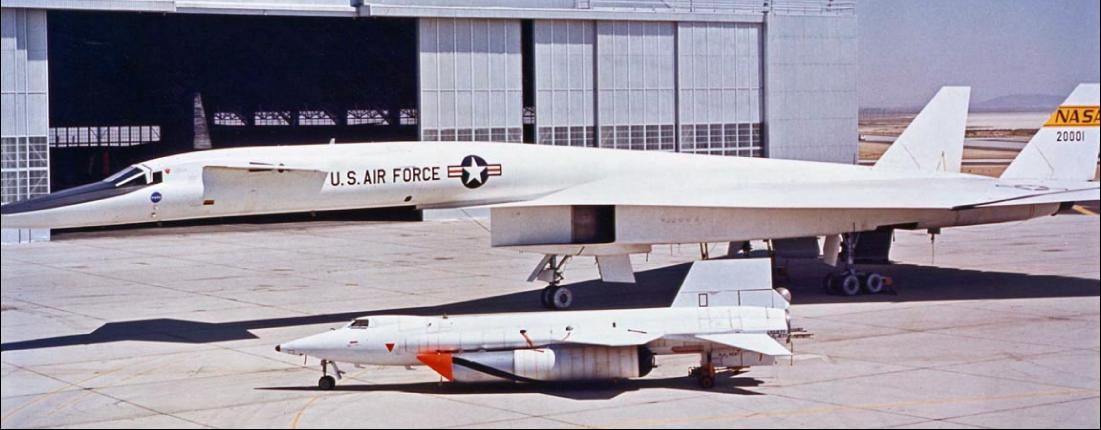 |
||
The newly unveiled X-15A-2 (now called "The White Knight" in honor of Pete Knight) next to XB-70A Valkyrie no. 1 on 4 Aug. 1967. North American Aviation |
||
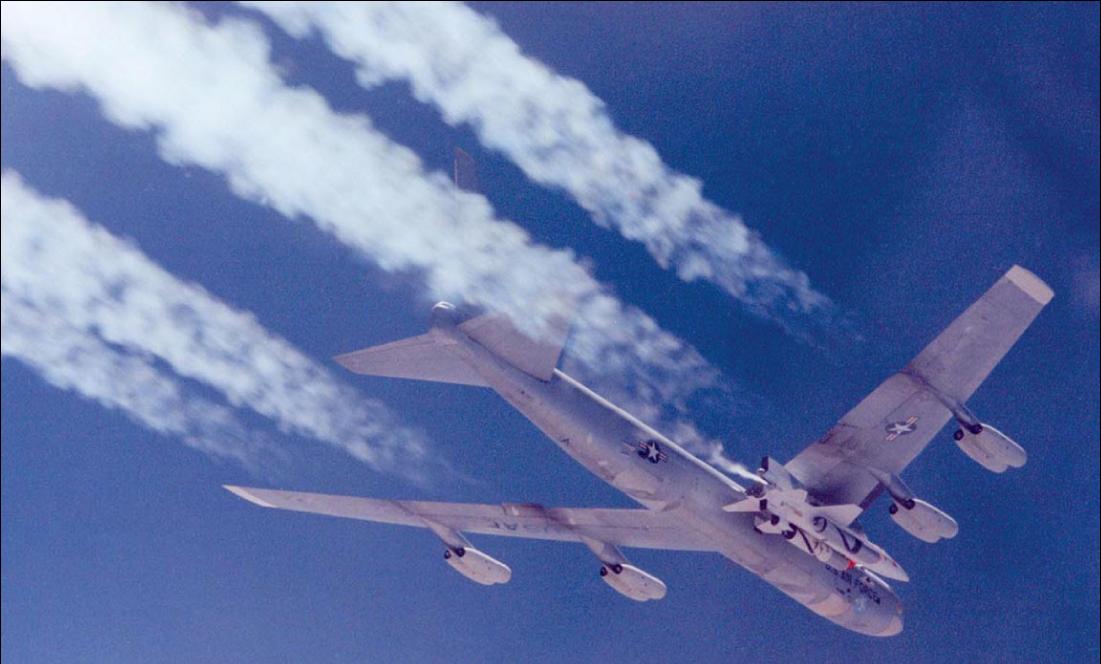 |
||
Captive flight of complete X-15A-2 with ablative and external tanks. Mission 2-C-93 on 7 Aug. 1967. Last check flight of the full system before the Mach 6.7 flight on 3 October. Armstrong Flight Research Center |
||
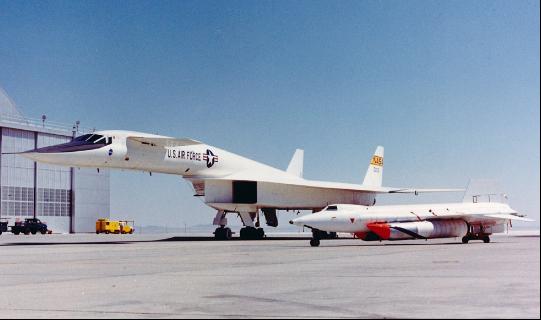 |
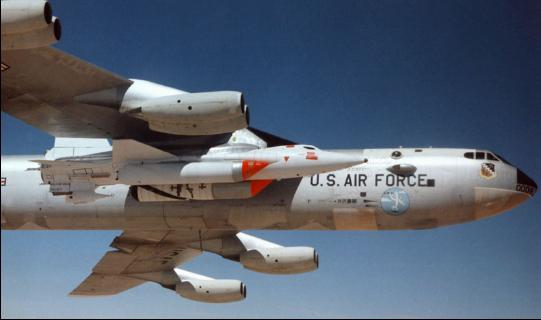 |
|||
Another view of the X-15A-2 and XB-70. North American Aviation |
B-52 no. 008 carries the A-2 to altitude for a captive systems check on 7 Aug. 1967. author's collection |
|||
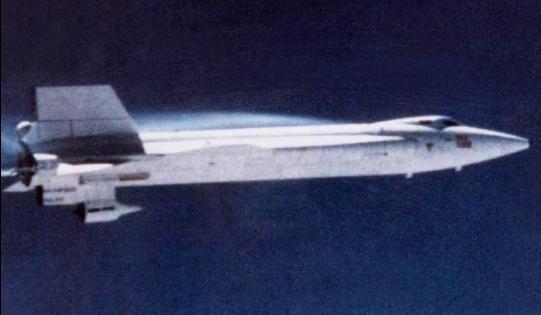 |
||||
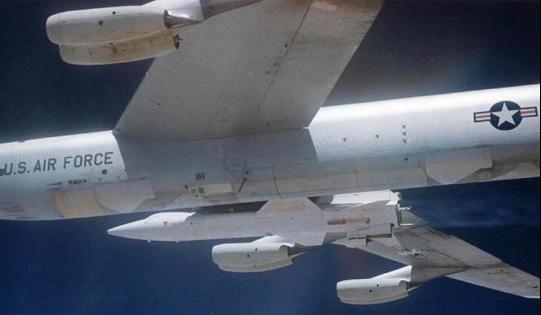 |
||||
External tanks removed for a final test flight with the full ablative coating and dummy scramjet in place. After two aborted attempts, mission 2-52-96 on 21 Aug. 1967 achieved Mach 4.94 (3,368 mph) at 91,000 feet. Edwards History Office |
||
— Pete Knight flies the fastest rocket plane flight — |
||
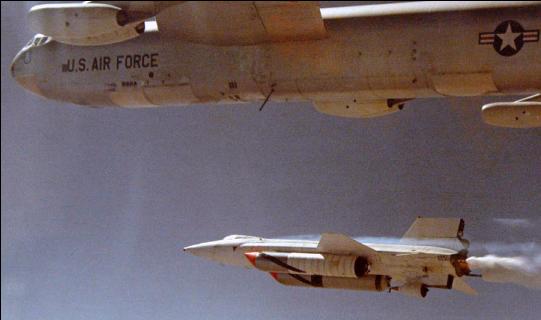 |
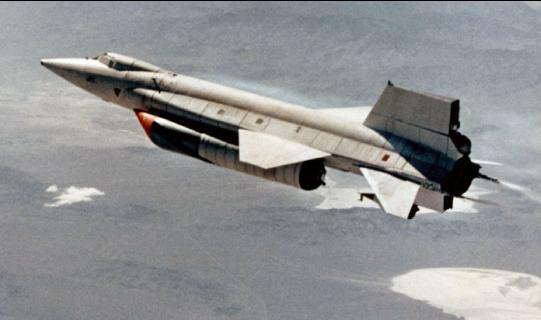 |
|||
Knight drops away and ignites the LR-99 for his speed run. Edwards History Office |
The X-15A-2 accelerates upward to 102,100 feet on mission 2-53-97. Edwards History Office |
|||
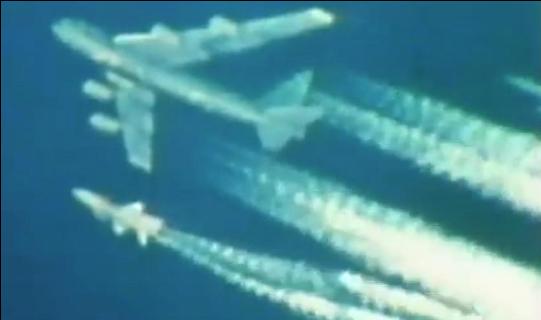 |
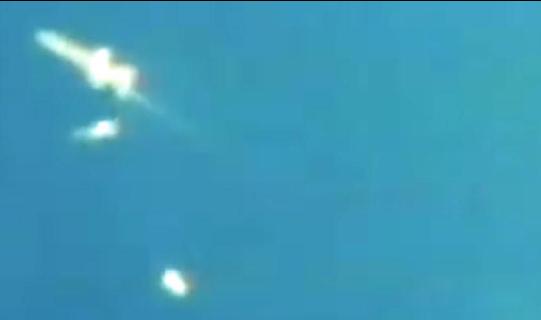 |
|||
Telescopic view from the ground of the X-15A-2 launch at 14:31 PST on 3 Oct. 1967. North American Aviation |
Ground-based telescope captured the Mach 2 external tank jettison 60 seconds later. author's collection |
|||
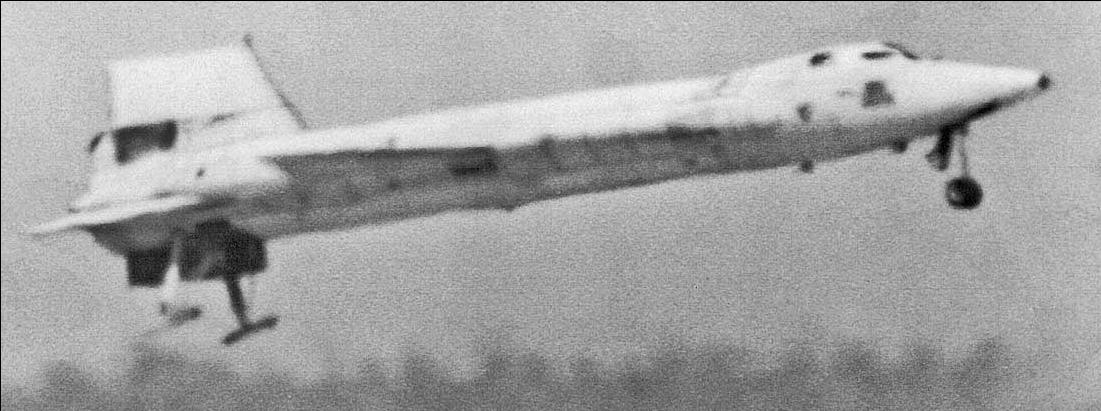 |
||
A very long telephoto shot of the X-15A-2 as it came in for landing. Note the blackened scramjet pylon and upper speed breaks. The aircraft suffered near catastrophic failure. Robert Lanktree collection |
||
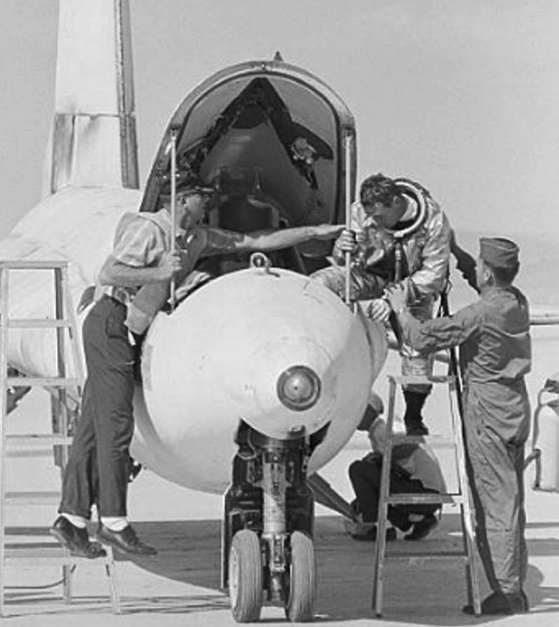 |
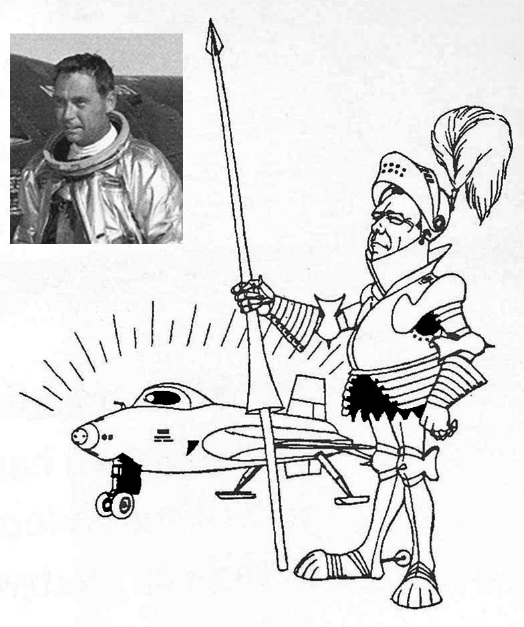 |
|||
Knight is helped from the X-15A-2 cockpit at the completion of the flight at 14:40 PST. author's collection |
Pete and his trusty steed, "The White Knight." Illustration by NASA artist Lee Lytton. Armstrong Flight Research Center |
|||
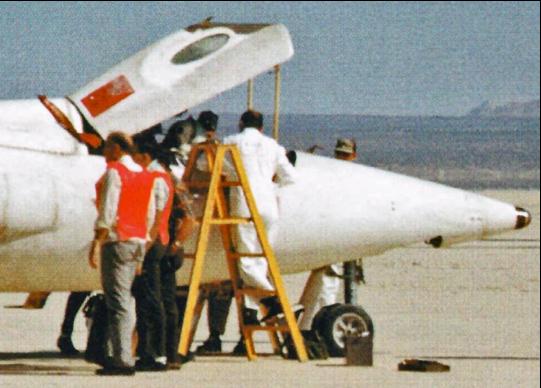 |
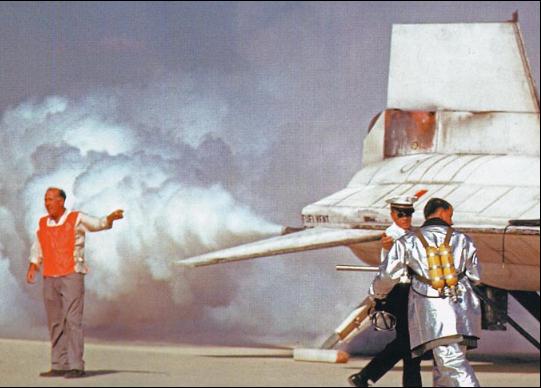 |
|||
Checking out Pete and the X-15A-2 cockpit soon after landing. Edwards History Office |
Purging the fuel lines to safe the aircraft. Edwards History Office |
|||
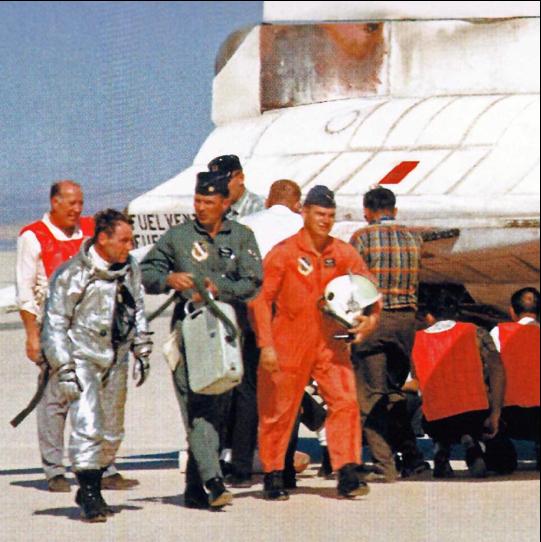 |
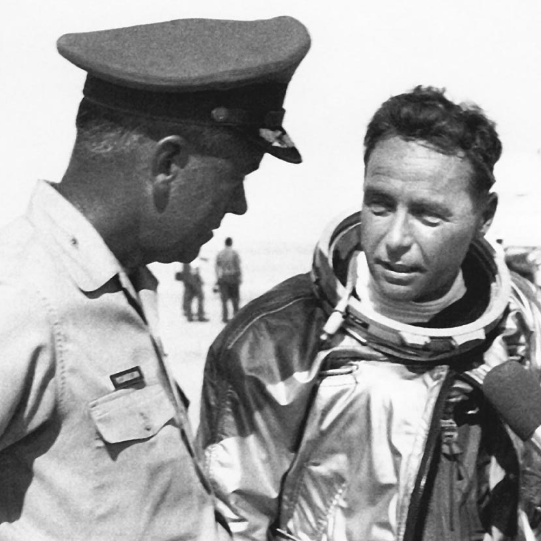 |
|||
Telling the tale of the flight to those on the lakebed after landing. Edwards History Office |
||
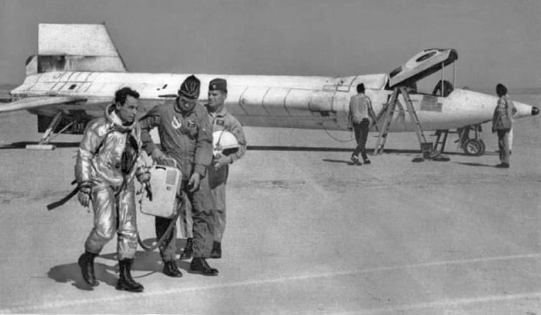 |
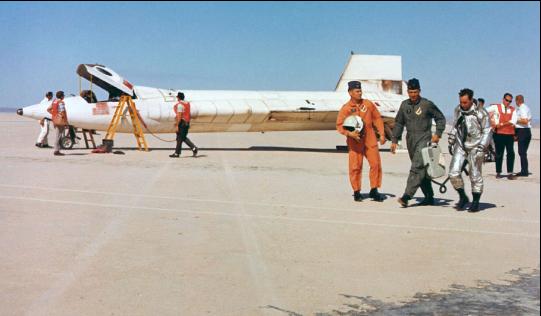 |
|||
After seeing the severe heat damage to his aircraft, Knight walks away for debriefing following the fastest manned aircraft flight ever accomplished. Pete and the X-15A-2 achieved Mach 6.70, the equivalent of 4,520 mph, during his 497 second flight! His record still stands today. Edwards History Office |
||
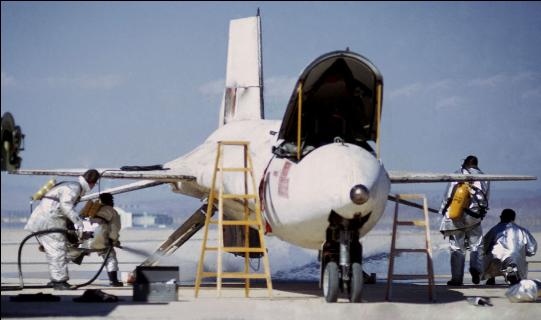 |
||||
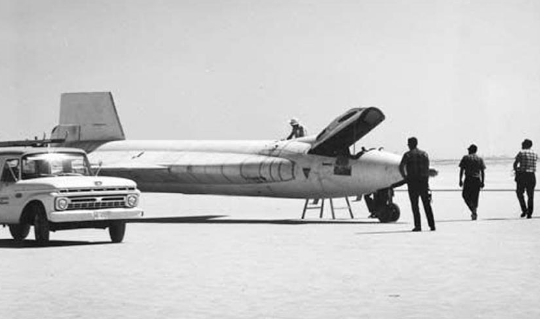 |
||||
Firefighters spray down the residual fuel on the lakebed after purging the tanks. Armstrong Flight Research Center |
The post-flight close-out crew prepares to bring the X-15 back to the hangar. Defense Audio Visual Agency |
|||
 |
||
The day after the Mach 6.70 flight, assessment of the damage caused by the hypersonic shockwave impingement continues. Armstrong Flight Research Center |
||
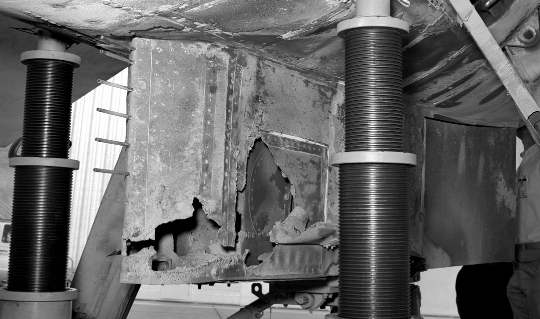 |
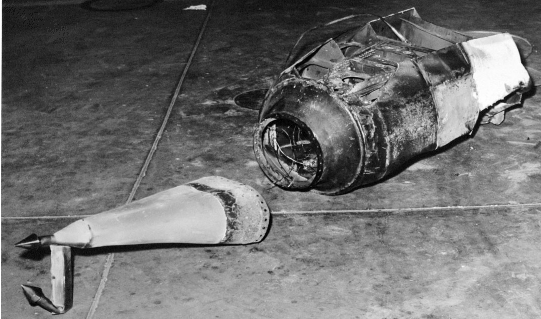 |
|||
Close-up view showing the burn-through damage to the lower ventral area. Bill Albrecht collection |
The scramjet was heavily damaged after premature ejection over the Bombing Range. Bill Albrecht collection |
|||
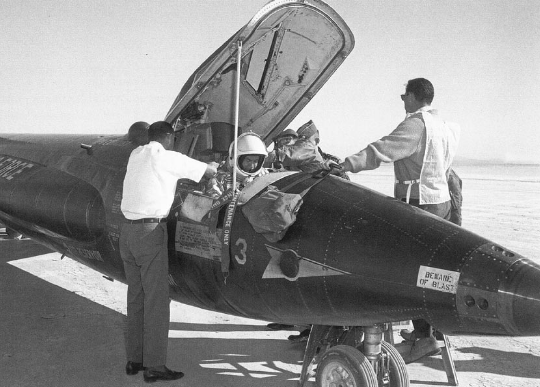 |
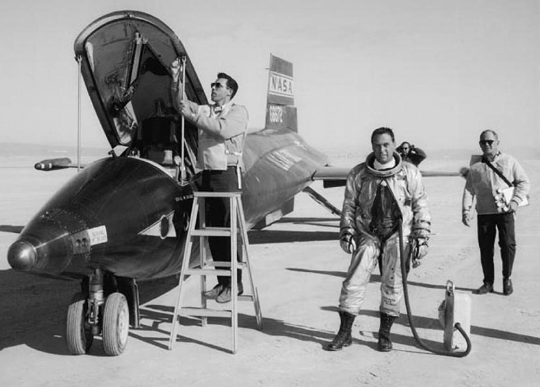 |
|||
Two weeks after the X-15's ultimate speed flight, Pete Knight earns his astronaut wings on mission 3-64-95. Knight peaked at 280,500 feet on 17 Oct. 1967. This was the last time X-15 no. 3 would land safely. Less than one month later, on 15 November, Michael Adams would lose his life when the aircraft went out of control and crashed. Edwards History Office |
||
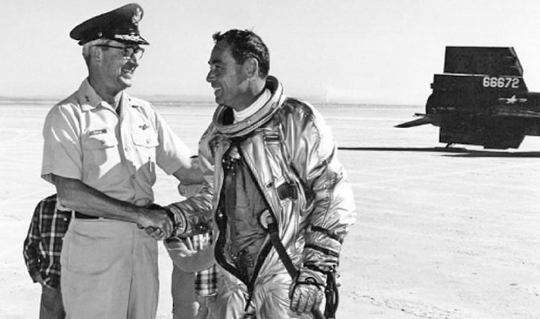 |
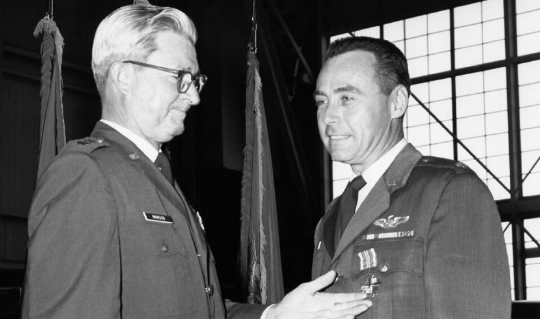 |
|||
Maj. Gen. Hanson greets Knight after Pete's astronaut qualification flight. Armstrong Flight Research Center |
Maj. Gen. Hanson presents Pete Knight with his astronaut wings on 29 Jan. 1968. Armstrong Flight Research Center |
|||
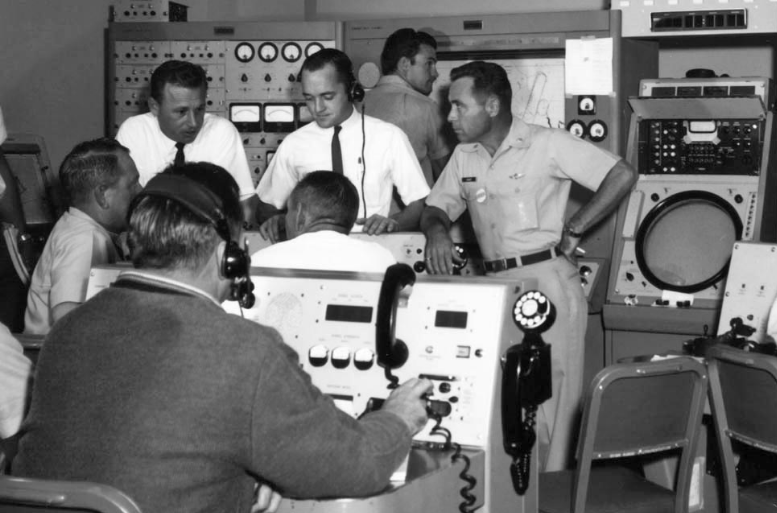 |
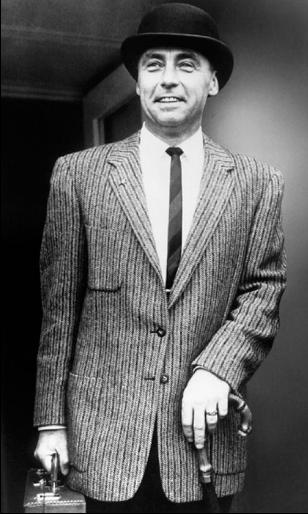 |
|||
Pete Knight (in uniform on the right) and Bill Dana (center) at the Beatty High Range Tracking Station. TD Barnes collection |
Knight as a proper English gentleman. North American Aviation |
|||
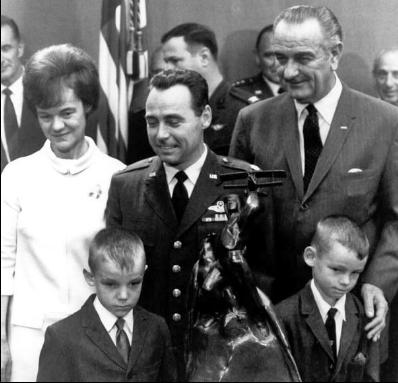 |
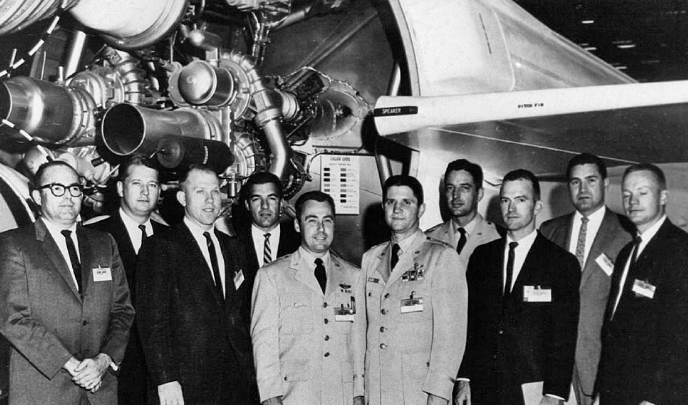 |
|||||
Knight recieves the Harmon Trophy from President Lyndon B. Johnson on 3 Dec. 1968. With Pete is his wife, Helena, and two sons, William and David. North American Aviation |
||||||
Knight (center), Dana (third from right), and Neil Armstrong (far right, eyes closed) with Titan/X-20 mockup. Edwards History Office |
||||||
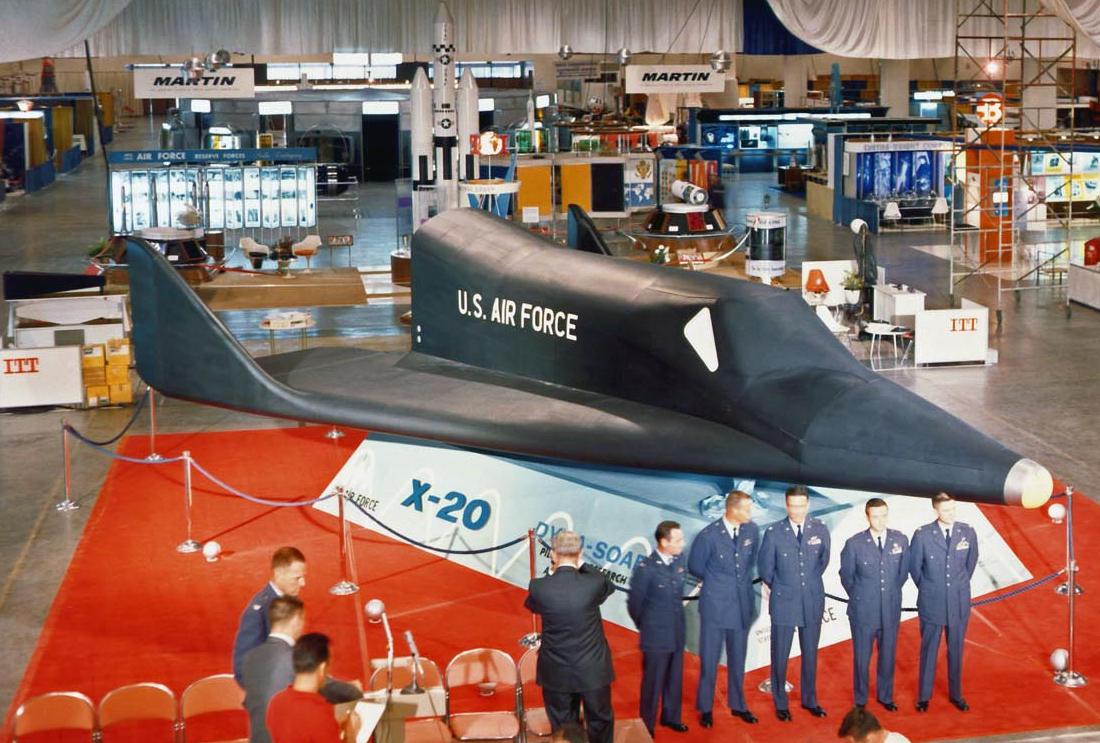 |
||
Unveiling the X-20 Dyna-Soar mockup at the Air Force Association Convention in Las Vegas, NV, on 24 Sep. 1962. Pete Knight is the leftmost of the five US Air Force pilots. Defense Audio Visual Agency |
||